Cape Cod in October and November is not quite as colorful as other parts of Massachusetts; the particular native and non-native trees in our yard don’t put on the show that other species famously do. Hurricane Irene and the recent Nor’easter also put a damper on what is typically a leafy green/brown/yellow fall, as much of the trees on the Cape lost leaves prematurely or turned a dull brown stained by wind-whipped sand. However, the somewhat damp, sparse landscape of winter-ready trees is not without its own beauty. The sudden departure of tourists, insects, and flowering plants creates a pervasive feeling of waiting. Not the waiting feeling that we experience during spring, with its anticipatory mood – but a “waiting” we humans have culturally created – looking forward to the holiday season with its interior warmth and color replacing that of the outdoor world’s.
I have spent most of my fall in the city and – lack of fall color aside - the experience of nature every time I have the chance to spend fleeting moments on the Cape always has both a healing and soothing effect. In October I sadly watched the last of the paper wasps living right outside my kitchen window. Their family dynasty ended as it began with first two, then just one wasp, slowly clinging to life on its tiny paper house. When the wasp family became only one and then the house appeared to have been bit into by a bird - I knew there would be no more wasps returning to my kitchen window.
Most people are afraid of wasps, and they have reason to be – the “paper” wasp has one of the most painful stings on record. But any encounter I have had with these bright yellow and black creatures has never ended with any sort of sting. Once or twice they landed lazily on my hot pink flip flop – and with a skillfully quick flip I was able to lose both sandal and wasp without any harm to either of us. There are many scientists now developing new theories of plant, animal, and insect sentience and intelligence. I would guess that if crows can recognize human faces and act accordingly, wasps (which can detect pheromones from 200 feet) may be acting quite intelligently as well. Hence my apparent ability to escape harm from them. Perhaps they were looking back at me while I admired them from my window thinking “She’s on the DO NOT STING list”. My vivid imagination would like me to think so anyway.
There is no clear change that happens in the fall landscape as there is with spring when one flower becomes two then twenty-two over the course of a few days. Or if there is daily change it is not something I can notice as easily – but one day I will come home and notice that every leaf has disappeared and the only green will be the scrub pines and holly. Everything will go into deep freeze… plants, insects and even some animals like the spring peeper.
 I just added the pink turtlehead to my yard, in a spot where a tree stood just a few weeks ago. The area gets some morning and late afternoon sun. The soil is moist and rich, so Chelone lyonii should do well. The plants also like a good composted leaf mulch, and I will add some homemade mulch once the oaks have shed their leaves. I only have 3 plants as I only found one local vendor who had the native variety. A cultivar, called “hot lips” is more readily available. I hope it will take over the area in the next few years – pink turtlehead tends to spread slowly by rhizomes to form large clumps, and somtimes it self-seeds in moist soils.
I just added the pink turtlehead to my yard, in a spot where a tree stood just a few weeks ago. The area gets some morning and late afternoon sun. The soil is moist and rich, so Chelone lyonii should do well. The plants also like a good composted leaf mulch, and I will add some homemade mulch once the oaks have shed their leaves. I only have 3 plants as I only found one local vendor who had the native variety. A cultivar, called “hot lips” is more readily available. I hope it will take over the area in the next few years – pink turtlehead tends to spread slowly by rhizomes to form large clumps, and somtimes it self-seeds in moist soils.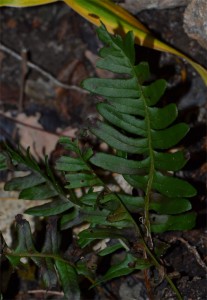 Polypodium vulgare is a cosmopolitan fern found in North America, central and northern Europe, and eastern Asia. The plant is quite hardy in sub-zero temperatures. It prefers acidic, well-drained and sandy soils and should do well in a Cape Cod woodland garden.
Polypodium vulgare is a cosmopolitan fern found in North America, central and northern Europe, and eastern Asia. The plant is quite hardy in sub-zero temperatures. It prefers acidic, well-drained and sandy soils and should do well in a Cape Cod woodland garden.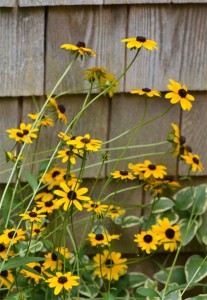 I simply love these plants. They are hardy, have dozens of flowers, and they provide color until late fall. Orange coneflower prefers sun, and if you can provide that you will enjoy these golden daisies with chocolate centers. In my garden, they have been in bloom since July and they are still going strong. The flowers are visited by bees and butterflies, and the seeds provide nourishment for chipmunks and birds.
I simply love these plants. They are hardy, have dozens of flowers, and they provide color until late fall. Orange coneflower prefers sun, and if you can provide that you will enjoy these golden daisies with chocolate centers. In my garden, they have been in bloom since July and they are still going strong. The flowers are visited by bees and butterflies, and the seeds provide nourishment for chipmunks and birds.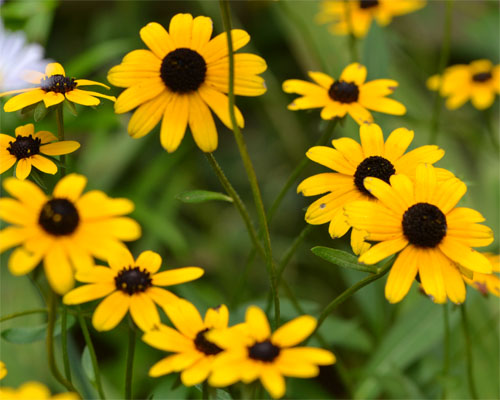
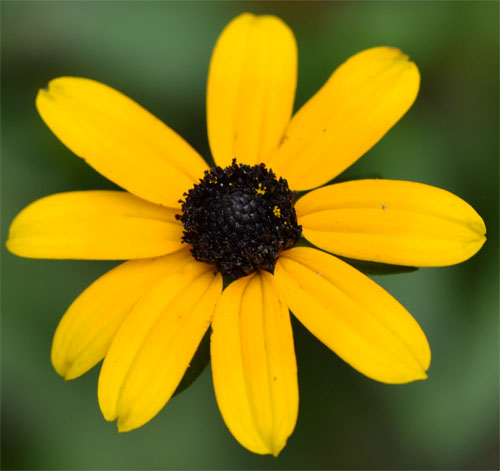
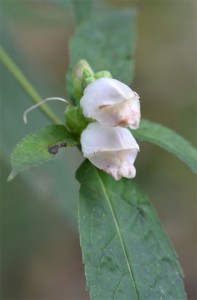 This time of year, with frost not too far off, it is nice to see some color in the garden, still. Orange coneflower, new york aster, and the goldenrods are providing much delight. And if you consider white to be a color (sorry, spectrum purists), you’ll enjoy Chelone glabra as well. White turtlehead is a particularly good plant for the woodland garden. This perennial plant finds its home in eastern North America and likes partial shade and moist conditions. It will thrive with adequate amounts of leaf mulch. The plants can grow 4 to 5 feet in height, and with the heavy flower heads they may require staking. The foliage has a nice dark green color. The plant easily grows from seed, but the expanding rootstock will produce a lot of new growth as well.
This time of year, with frost not too far off, it is nice to see some color in the garden, still. Orange coneflower, new york aster, and the goldenrods are providing much delight. And if you consider white to be a color (sorry, spectrum purists), you’ll enjoy Chelone glabra as well. White turtlehead is a particularly good plant for the woodland garden. This perennial plant finds its home in eastern North America and likes partial shade and moist conditions. It will thrive with adequate amounts of leaf mulch. The plants can grow 4 to 5 feet in height, and with the heavy flower heads they may require staking. The foliage has a nice dark green color. The plant easily grows from seed, but the expanding rootstock will produce a lot of new growth as well. 
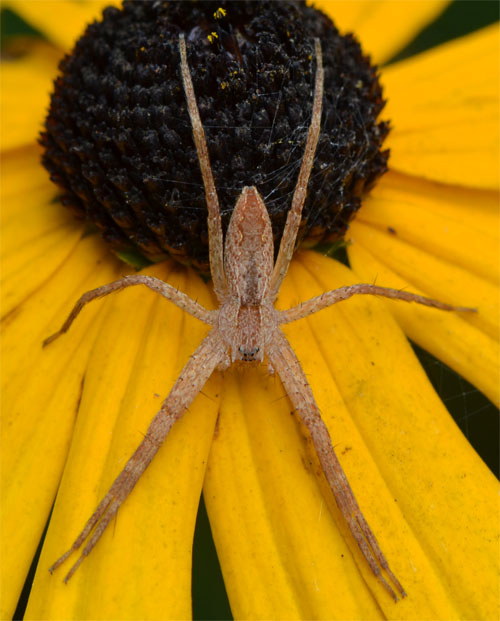 This nursery web spider (Pisaura mirabilis) is patiently awaiting dinner on the petals of a blackeyed susan. Woodland garden, August 2011
This nursery web spider (Pisaura mirabilis) is patiently awaiting dinner on the petals of a blackeyed susan. Woodland garden, August 2011